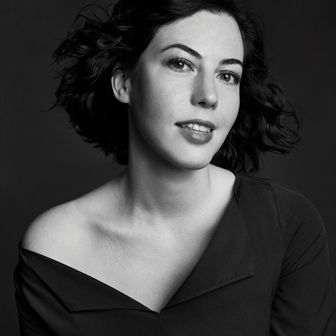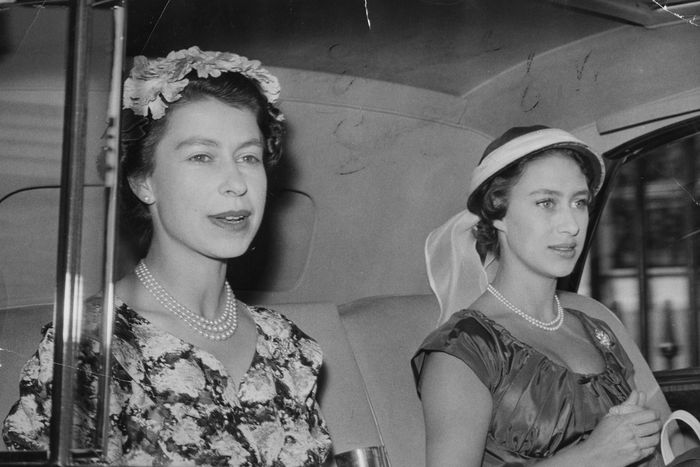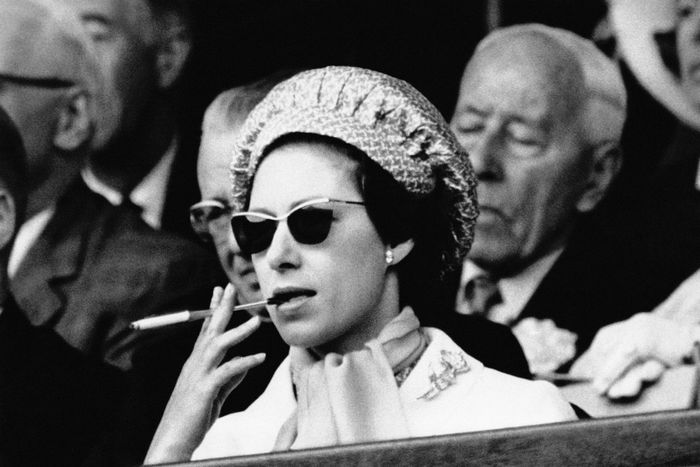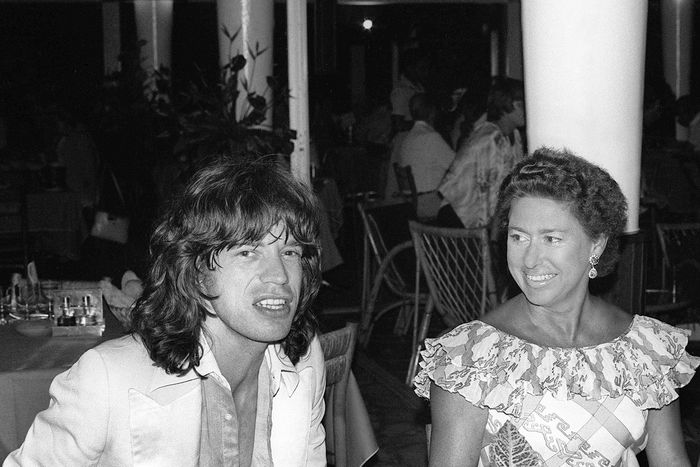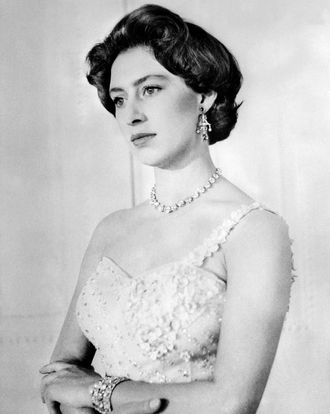
Princess Margaret, the younger sister of Queen Elizabeth II, passed away 17 years ago this month, but thanks in large part to The Crown, the late royal party girl is as popular as ever. The first two seasons of the Netflix series showcased Margaret’s younger years, which were full of heartbreak, loneliness, and wild nights out in the chic London arts scene of the 1950s, leading to a renewed cultural interest in the royal.
To satisfy our communal thirst for anything and everything Princess Margaret, PBS will air its new two-part series, aptly titled Margaret: The Rebel Princess, on February 10 and 17. The documentary traces the royal’s life (going beyond the stories we already know from The Crown) and features interviews from a number of people who knew her — including Christopher Warwick, who wrote Princess Margaret: A Life of Contrasts, an authorized biography of the princess.
Ahead of the show’s debut, Warwick chatted with the Cut about working with Princess Margaret, the sides of her that the public never got to see, and why her hanging out with the likes of Mick Jagger was simply second nature.
You were the princess’s authorized biographer, meaning she specifically selected you to tell her story. What was that experience like?
I first met the princess when I was working with a friend of hers on his first book, which we wrote at her house at Kensington Palace. Although I’d been well-aware of her all my life, I actually knew her for the last 22 years of her life, and it was a remarkable experience, really, from a biographer’s point of view. She was a fascinating person. It really was terrific to be able to talk to her directly and personally about aspects of her life and who she was. I’m not entirely sure that a biographer working with the person they are writing about gets to the true nitty-gritty, but you do it as best you can. And that’s how I was with Princess Margaret.
Did you have any preconceived notions of Princess Margaret before you met? And if so, were you surprised at all by her?
The very first time that I had lunch with her, she said (and I remember her words precisely): “I expect before you met me, you thought I was the sort of person the tabloids said I was.” Then she paused, and she said, “And now you know I’m not.” It was so true that the woman I was talking to, the person I was getting to know, really wasn’t the person that I had read about in the tabloid press. I suppose it’s not unfair to say the public perception of her is divided. It’s true that, yes, she could be difficult. Yes, she could pull rank. Yes, she could bring a conversation to a shuddering halt by a correction or by a remark. But if we think of those as faults, then for all those faults, she was also, conversely, such fun. She was hugely intelligent, incredibly thoughtful and kind, and that’s the side of her by and large that was either not known or certainly wasn’t reported on.
Thanks to The Crown, she’s become popular with a new generation of people, and this documentary takes us through more of her life. What do you think will most surprise people?
Margaret was perceived in many ways as a pioneer, as she straddled two worlds: the royal world with all its traditions and protocols and the modern world. If you went into her house at Kensington Palace, it looked like just a beautiful 18th-century classical interior. But within that interior, you got a very modern woman. On the grand piano, for example, she had something that was called Billy Bass, it was a rubber fish on a plastic wood look-alike base. If you pressed the button, the fish actually flapped about and sang “Don’t Worry, Be Happy.” She was great fun. She had a lovely sense of humor. She could be very naughty.
But if she felt out of her comfort zone, if she felt threatened, if she felt she was made to look silly, then she would pull rank because of who she was. She famously had beautiful blue eyes, but if you overstepped the mark, those eyes turned to ice. I saw it only once. Otherwise, there are lots of stories about her unpleasantness. Some are true, and some are absolutely not. But what you never get reported was what a lovely person she was otherwise. She was a paradoxical character, if you like. Even the queen always said that her sister was an enigma.
Princess Margaret got a lot of criticism for being a party girl, but this documentary really shines a light on just how remarkable it was for her to even be so independent. The fact that she went out at night and even smoked in public seemed revolutionary.
Smoking at that time was not at all unusual; what was surprising was when she was photographed in a nightclub when she was 19, lighting a cigarette in a long, black cigarette holder. There are things that we do that you don’t expect royalty to do, and doing this was pretty cool and trendy and shocking at the same time, but she was perceived as being a very glamorous trendsetter. In many ways she was.
Can you speak to her relationship with Queen Elizabeth?
Perhaps people don’t really appreciate how strong the bond of love was between Elizabeth and Margaret. The queen, even when they were girls, always kept an eye on her sister because Margaret could be wayward. She could be cheeky. She could be naughty. In terms of personalities, Elizabeth and Margaret were as different as chalk and cheese. But despite that, there was never any break in the bond between them. There was great love between them. And from the queen’s point of view, there was a lot of sympathy for what went on in Margaret’s life. They spoke every day on the telephone, even if it was just a few minutes, and they were always very close.
The princess also made headlines for her relationships — notably, her doomed relationships with her father’s former aide, Peter Townsend, and her failed marriage to Antony Armstrong-Jones. Later, she made headlines after her affair with gardener Roddy Llewellyn went public. How did the royals weather that scandal?
When the princess met Roddy Llewellyn, they unexpectedly hit it off, and he provided her with something she hadn’t had: affection and, from her point of view, love. But the public relationship did damage Princess Margaret’s reputation considerably. The queen was known to have said to her prime minister at the time, “What are we going to do about my sister’s guttersnipe life?” This remark was apparently made public by the queen’s private secretary, Lord Martin Charteris. I asked him if she’d actually said that and he told me, “Oh, words to that effect.”
Was there ever any royal concern about Margaret’s socializing and close friendships with celebrities?
Margaret was a very modern person. In the 1950s when Margaret started to come into her own, there were only two women that the international press were interested in, and that was Princess Margaret and Elizabeth Taylor. In the ’60s, when Margaret married Tony Armstrong-Jones, they were both very much part of the arty set of art, literature, films, and theater. She said, “People say, this was what Tony introduced me to, but I was always interested in that.” She was always a part of that. She was famously close friends with dancers, and among her putative lovers were the actors Richard Harris and Warren Beatty. This is a lady who was modern royalty in a way that Britain hadn’t really seen before. To know Mick Jagger was no big deal. To know Peter Sellers was no big deal.
Do you think she ever really got over the disappointment of not being able to marry Peter Townsend, whom she was famously initially not permitted to wed by her sister?
Peter Townsend was not the great love of her life. Princess Margaret would not talk to any of even her closest friends about him. Even as her authorized biographer, oh golly, it was difficult talking to her about Townsend. She wasn’t giving anything away. “It’s all over and done with,” she’d say. “I’ve forgotten it.” But I got just one glimmer of the truth when she said to me on one occasion, “How do you know when you’ve been apart from somebody for two years if you still want to marry them?” So no, he wasn’t the love of her life; the love of her life was one man, and he was the man who died before she was 22, and that man was her father, the king, whom she adored.
Now, Princess Margaret is largely thought of as a sort of tragic figure — a fun girl in her youth who ended up alone. Is there any truth to that?
In her later years, after Roddy married in 1981, she was a lady who needed love. It would have been absolutely wonderful if she had found somebody after Roddy, perhaps more of her own generation, who just could have played the part of partner. In the ’80s, there was a news story that she was about to become engaged to a friend of hers called Norman Lonsdale — because she had been seen wearing a ring on the wedding finger. She said to me, “Oh dear, oh poor Lonsdale.” She told me, “When a 51-year-old woman puts a 25-year-old ring on her finger, it does not mean she is going to be married.”
Then she told me, and this was very poignant at that time, “At my age, I shouldn’t be alone.” I think that sums up much of her later years: She was alone. It’s sad, but the idea that she was a sad woman simply is not true. There were times when she was very, very lonely. But my goodness, she was a lady who loved life and enjoyed friends. We’ve all gone through sad and unhappy times in our life and she was no different. But was she a sad or a tragic character? No, she wasn’t. Not at all.
This interview has been edited and condensed.


